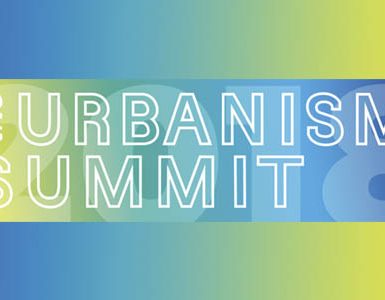As interesting follow-ups to the essential “The Atlantic” piece I blogged about below, there are two other essential articles…
One is by David Brooks of the NY Times, who had been drinking New Urbanism water of late, but backpedals with his depressing “I Dream of Denver” piece, which covers some (flawed sounding) polling data suggesting that you and I may want more walkable, urban, mixed used neighborhoods, but that the rest of America just wants to live in a McMansion near Route 2 in Warwick… With lots of McDonalds close by… If Route 2 was in Orlando. It’s required reading for insight into how the rest of the country is thinking outside of our urbanism echo chamber…
180 degrees away from this, the NY Times Bob Herbert, who generally focuses on big picture issues of poverty and social equity, finally adds mass transit (especially high speed rail) to his worldview in a piece slamming the “can’t do” attitude of our government towards improving any infrastructure other than roads.
Compare and contrast, then discuss…
PS: Did anyone else other than me find it troubling that there was almost not a single mention of mass transit or rail in President Obama’s otherwise excellent State of the Union speech last night?





Opposing views from writers like David Brooks, while sobering, are necessary to understand suburban and rural negative perceptions of cities (as well as former residents who moved out of cities) and how to change that perception. As far as President Obama’s speech not mentioning transit, I am not surprised given his tendency to take a centrist, bi-partisan (read “safe”) tact with his message. I imagine that the reaction of most individuals and legislators who have such a negative view of transportation that does not involve their automobiles has given pause to the message that public transit is a key component to a more sustainable country.
Brooks is a weasel.
Why is this offered as evidence that people want to move to the suburbs instead of evidence that it might be time to improve urban communities (make them more urban) for a change?
Social equality?? And what social structures? Let’s confront an ugly fact: The biggest selling point of the suburbs has always been isolation from people too poor to afford cars and big single family houses, especially as this affects who the kids have go to school with.
Keeping the focus on big yards and scenery is how people like Brooks avoid the taboo subject: How classism and racism are entwined with housing markets, zoning and transportation policies.
Brooks is more than a weasel, he is intellectually dishonest.
He is so intent on arguing that we all want the McMansions that he pulls a slight of hand. Read this again:
Cities remain attractive to the young. Forty-five percent of Americans between the ages of 18 and 34 would like to live in New York City. But cities are profoundly unattractive to people with families and to the elderly. Only 14 percent of Americans 35 and older are interested in living in New York City. Only 8 percent of people over 65 are drawn to Los Angeles. We’ve all heard stories about retirees who move back into cities once their children are grown, but that is more anecdote than trend.
So somewhere around age 35 you grow up and move to Phoenix? That reads more like evidence of a generational shift than a factor of maturity.
On a related note, LA sux. No one with any sense has wanted to live there since 1992.
Don’t give up hope.
Yes, arguing that people don’t want to live in cities and then holding up LA as an example of that fact (and citing the over 65 age group) is quite silly.
I’m over 35 (just) and I’ve lived in New York, and am not particularly interested in moving back. But I don’t want to move to Arizona either. I’m all about living in a small city like Providence though.
While it’s certainly not right to support and/or subsidize the continued building of suburbs, I don’t think it’s right to wrap cities up in a white package in order to get people interested in them either. It should happen organically, and as soon as the resources for suburban development run out (arguably, they’re already starting to), we’ll start to see more people showing up in cities again. It may very well take a lifetime to happen though, and it probably won’t exactly look the way that we picture it now, i.e. spotlessly clean and well merchandised.
@Alger: I bet those numbers would increase if you substituted “an urban area” for “New York City”. New York is it’s own beast, and many people are not interested in living in such a huge city. But simply because they have no interest in living in NYC does not mean they aren’t interested in living in a smaller city, like Providence. Using statistics like those related to the extremes does not prove a point and cannot be used to represent all cities.
Easy target, this Brooks.
14% of Americans over 35 interested in living in NYC: That’s about 21 million folks. Yeah, nobody wants to live in NYC.
And how exactly does that stupid Starbucks/McDonalds business prove anything? I never go to either and would rather live near Coffee Exchange or Not Just Snacks.